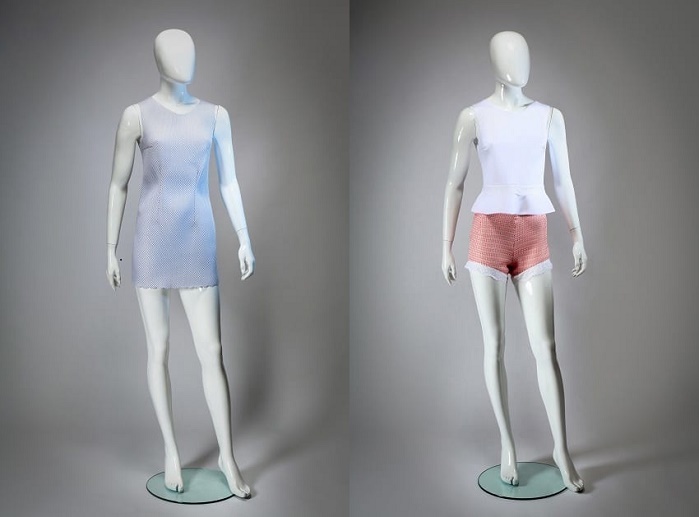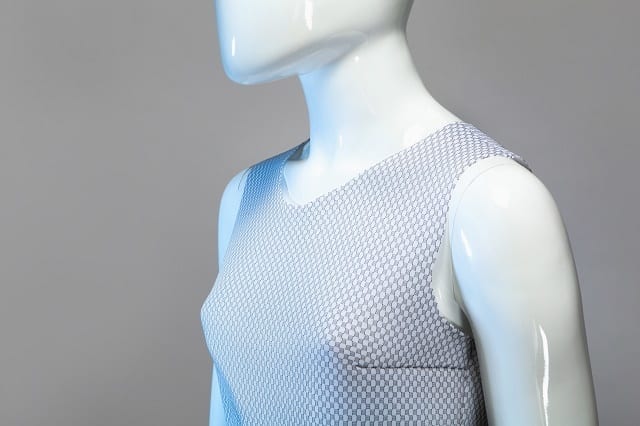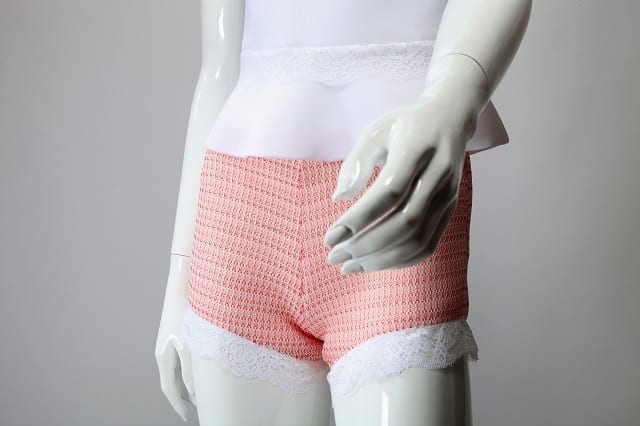
Dissolving design boundaries with 4D-KNIT
Designer Maria Valdez created a new clothing collection made from warp-knitted spacer textiles, supplied by Karl Mayer.

28th March 2017
Knitting Industry
|
Obertshausen
A designer Maria Valdez, from the company Nucleus, created a new clothing collection made from warp-knitted spacer textiles by using ultrasonic welding technology. The garments, with their extravagant styling, were created and produced by the designer on behalf of Karl Mayer.
The German manufacturer of warp knitting machines supplied the spacer textiles – a red and white patterned type produced on an RD 7/2-12 EN in a gauge of E 28 and a version patterned with a chessboard design produced on an RD 4 N EL in a gauge of E 32.

“The two fabrics are extremely soft, thin and light and made from 100% polyester,” the company reports. “The construction has breathable knitted constructions on the two surfaces and an air-carrying spacer layer in-between, which enables the spacer textile to provide excellent climatic comfort.”
Warp knitted spacer textiles were originally the domain of technical and semi-technical applications, but for a long time now, they have been making inroads into the clothing sector. Their exceptional characteristics are the reason why designers are increasingly turning to spacer textiles, Karl Mayer reports.

With their 3D construction, these voluminous textiles deliver excellent climatic comfort. Their draping characteristics mean that they can be used to produce puffball styles, as well as wide shapes, extravagant contours and rigid design details.
Spacer textiles can tap into their extensive draping potential by using suitable making-up processes. In this case, the right type of edges and seams is crucial. In many cases, spacer textiles are being processed by ultrasonic welding technology to produce neat edges.
With this process, which is based on a vibration principle, the textile is cut and neatened in a single step, the company explains. This produces edges that are flat, which feel soft against the skin without scratching. The high wear comfort is the result of the process itself. With ultrasonic welding, the pile yarns are melted with the yarns in the cover faces so that they cannot protrude from the surface and scratch the skin.

The same applies to the seams at the joining places. Cut and seal ultrasonic technology is used to join 3D textiles together; two layers of the textile are ultrasonically cut and a joining seam is formed at the same time. This is then covered with a band on a hot-air machine to produce a firm, flat, soft seam.

Business intelligence for the fibre, textiles and apparel industries: technologies, innovations, markets, investments, trade policy, sourcing, strategy...
Find out more